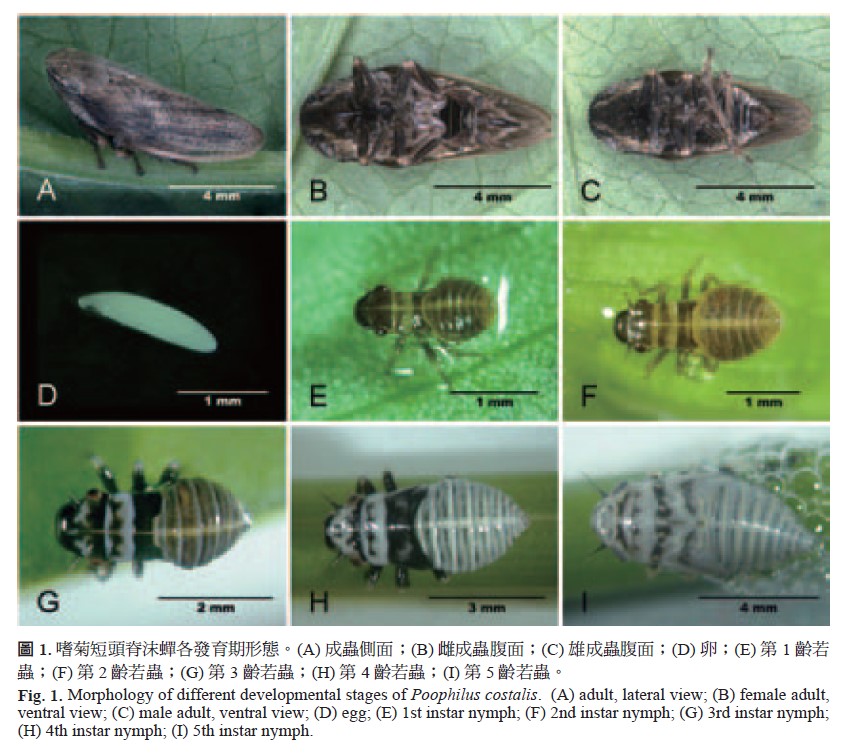All issues

Author:Shu-Chen Chang, Hsien-Tzung Shih, and Kuang-Hui Lu*
Abstract:
The xylophagous spittlebug Poophilus costalis (Walker, 1851) has a wide variety of host plants. This study was conducted to investigate the morphology and development of the spittlebug using Commelina diffusa Burm. f. as the host plant. The average head widths of the 1st, 2nd, 3rd, 4th and 5th instar nymph were 0.53, 0.73, 1.10, 1.64 and 2.43 mm, respectively; and the average body length of these nymphs were 1.66, 1.94, 2.67, 4.08 and 6.02 mm, respectively. At 25℃, the average durations for the development of the 2nd, 3rd, 4th and 5th instar nymph were 4.0, 4.0, 4.8 and 8.9 days, respectively. While feeding, the nymph fxed its stylet sheath on the surface of the host plant and then inserted the stylet bundle through the epidermis to feed on plant sap. The lengths of the stylet sheath and stylet bundle were 1.64 and 1.48 mm, respectively. Color of the extruded froth of the 5th instar nymph was blue after14 minutes of feeding on Bidens pilosa L. var. radiata Sch. dipped in Brilliant Blue FCF stain solution. Results of cytological studies showed that, while the esophagus, flter chamber, midgut and hindgut of the nymph were stained blue, the four Malpighian tubules remained unstained, revealing that the food fluid did not flow directly through these tubules. The posterior midgut was shown to enter the lower end of the flter chamber, run anteriorly and convolutely up the chamber, and then turned around all the way down to the lower end of the flter chamber, piercing the chamber just above the entrance of Malpighian tubules. As this spittlebug has a considerable potential to spread diseases to a variety of host plants, results of this study are useful in future investigations of vector-pathogen relationships.
Key words:Poophilus costalis, Spittlebug, Xylem-feeding insects, Morphology, Development time
Download:![]() PDF Links
PDF Links
- 1. Development of Tractor-Mounted Seedling Transplanter for Sweet Potato
- 2. Synergistic Effect of Additional Gas on the Toxicity of Phosphine to Sitophilus oryzae and Sitophilus zeamais (Coleoptera: Dryophthoridae)
- 3. Effects of Temperature and Solar Radiation on Growth Traits and Plant Elements in Purple Leafy Sweet Potato
 Submit your manuscript
Submit your manuscript
 Guide for authors
Guide for authors